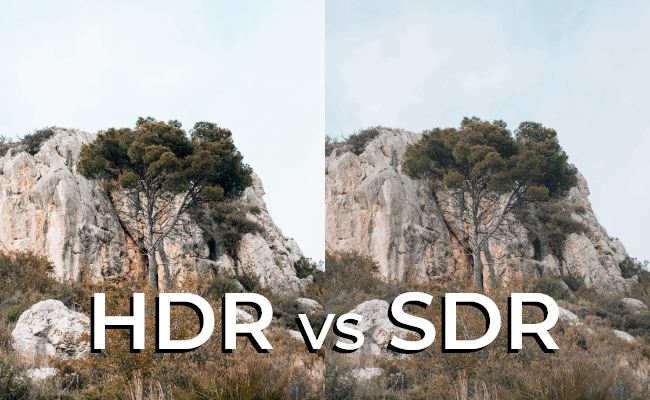HDR vs SDR ,Which is better?
Release time:2024年12月17日 | View volume:249
HDR vs SDR ,Which is better?

Let's check the different between HDR and SDR.
HDR (High Dynamic Range) and SDR (Standard Dynamic Range) are two different ways of representing the brightness and color range of an image or video. The key difference lies in the amount of detail they can capture and display, particularly in the brightest and darkest parts of a scene.
Frist for SDR (Standard Dynamic Range),there are some tips :
Limited Brightness Range: SDR has a much smaller range of brightness levels it can display. This means it struggles to accurately represent both very bright and very dark areas in a scene simultaneously. Details in highlights (bright areas) often get "blown out" to pure white, while details in shadows (dark areas) become crushed into pure black.
Narrower Color Gamut: SDR also typically uses a smaller color gamut (range of colors). This means the colors aren't as rich or vibrant as they could be.
Older Technology: SDR is the older technology and is the standard for most traditional broadcast television, DVDs, and older streaming content.
Examples: Standard definition TV (SD), DVD, many older Blu-rays, and some streaming services in standard quality.
For HDR (High Dynamic Range),there are some tips:
Wider Brightness Range: HDR boasts a dramatically wider range of brightness levels. This allows for much more detail in both the highlights and shadows. You'll see brighter whites, deeper blacks, and more nuanced tones in between. This creates a more realistic and lifelike image.
Wider Color Gamut: HDR typically uses a wider color gamut, such as DCI-P3 or Rec.2020, resulting in more vibrant and accurate colors. This contributes to a more immersive and visually stunning experience.
More Realistic Contrast: The combination of wider brightness and color gamuts leads to significantly improved contrast, making images appear more three-dimensional and lifelike.
Meta-data: HDR uses metadata to inform the display on how to best interpret the image, helping it accurately represent the intended brightness and color.
Examples: 4K Blu-rays, many streaming services offering 4K HDR content (like Netflix, Amazon Prime Video, Disney+), and HDR-capable gaming consoles.
For a quick look, take a look at the comparison table between HDR and SDR:
While HDR offers a superior viewing experience, SDR remains widely used due to its backwards compatibility and lower production costs. However, the advantages of HDR in terms of realism and detail are substantial for those with compatible equipment.